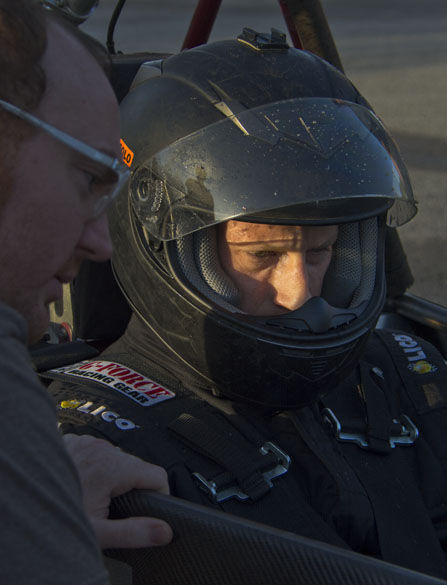Saluki Racing prepares for events

May 5, 2014
In a garage at the base of the Engineering Building, Saluki Racing revs its vehicle’s engine and checks all last minute changes in preparation for a four-day racing series beginning May 14.
The team has won numerous awards in its three years competing in the Society Automotive of Engineers, Formula SAE racing series, and wants to bring home several more this year.
Formula SAE is a global racing series, held twice a year in the United States, where various universities race their vehicles in multiple competitions.
Advertisement
The races take place in Lincoln, Neb., in June and in Brooklyn, Mich., in May at the Michigan International Speedway.
Nick Twombly, Saluki Racing’s administrative captain, said the team’s best race was in June 2013 when the team placed 34th of 80 competitors.
Jeffrey Burdick, Saluki Racing’s lead powertrain engineer, said he is happy the team even finished last year, because half of the vehicles don’t cross the finish line.
The team of nearly 25 students is also judged on business presentation, engineering presentation, design and management.
“It’s not just the car moving forward for what you’re being judged on,” he said. “Like last year at Lincoln, we won the cost report. We had the best use of money of any car there. You can have a multimillion dollar car, that’s fine, and there are teams that have budgets that are in that price range, but is that really true to the spirit of the competition?”
Burdick said the Formula SAE race series has little restrictions compared to other competitions.
“The engine has to be less than 600 cubic centimeters and it has to breathe through a 20 millimeter restrictor,” he said. “It has to have four wheels and it has to go forward, and that’s basically it for performance requirements.”
Advertisement*
Burdick said when teams must build a new car each year if it was previously raced at a competition. He said you can always find someone working on the car year round, no matter the time of day.
“[It is worked on] over summer, breaks, midnights, mornings,” he said. “It is a very man-hour intensive project.”
Burdick said when compared to other universities, Saluki Racing’s funding is almost nonexistent. He said the team makes most of the parts used on the car, such as the wiring harness.
“It’s funny when budgeting decisions affect how we do things, like making [parts] ourselves instead of buying something,” he said. “When we went to competition, they thought we bought the wiring harness, but no, we made it ourselves. Other teams, they’ll buy the high end material, like you’d see on an actual race car, they won’t know how to put it together.”
Kanchan Mondal, Saluki Racing’s faculty adviser, said a decent car would cost roughly $20,000, and the team does not have that money.
Burdick said the team will hopefully pool in more money since it became a Registered Student Organization this year. It can receive funds from the SIU design RSO’s budget and are searching for more sponsors.
SIU provides the team with a carbon densifier, which allows the team to build parts in house such as carbon breaks.
Burdick said Saluki Racing looks great on a resume and helps attract new students to the engineering program. The team’s vehicle was featured at the 2013 Chicago Auto Show, which greatly helped promote the team and university.
“Of the 64 freshman mechanical engineering students, like fresh people coming in – 15 of them saw us at the [auto show] and came to SIU,” Burdick said.
Twombly said while the team is small, most members are fairly involved compared to other universities.
“University of Illinois had a team of 100 guys and I think 35 of them went to the competition,” he said. “We had about 15 guys and nine of them went to competition.”
Advertisement






